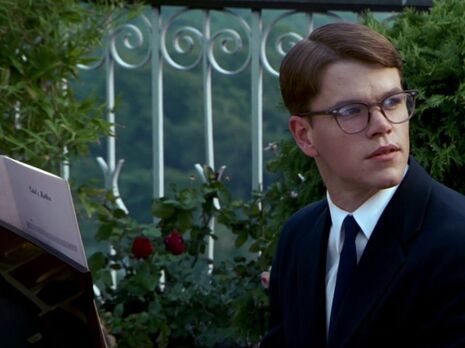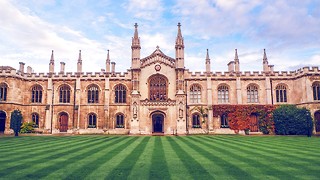An obsession with transgression – Envy
Jemma Slingo’s new column explores the seven deadly sins in literature, starting with Patricia Highsmit’s The Talented Mr Ripley

Oscar Wilde claimed that “there is no such thing as a moral or an immoral book”. Samuel Richardson asserted that fiction should “instruct and improve”. Meanwhile, Philip Sidney sat on the fence, declaring that art’s job is to “teach and delight”. Despite their different attitudes, (it’s hard to imagine Wilde and Richardson ever hitting it off…) what these writers share is a fervent, fetid fascination with sin. Whether a novel be insufferably moralistic (I’m looking at you, Pamela), or dizzily decadent, the sordid centre remains the same. In the light – or rather, the murky gloom – of this revelation, I will be reviewing seven novels which explore the Seven Deadly Sins: lust, pride, envy, greed, wrath, sloth and gluttony. One book for each offence. A seven week literary voyage from the priggish to the piggish.
It seems appropriate to start with the ultimate scholar of squalor, the crime writer – namely, the American novelist Patricia Highsmith. Highsmith’s The Talented Mr Ripley is the first of five novels following the trials and triumphs of the series’ eponymous hero. Asked by the wealthy Mr Greenleaf to fetch his son, Dickie, from a life of bohemian frivolity on the Italian coast, Tom sails to Mongibello to retrieve him. Once there, however, the down-at-heel Tom is rather taken with Dickie’s European lifestyle. Indeed, what starts as breezy admiration becomes a “heartbreaking surge of envy”. He imagines himself in Dickie’s shoes. In fact, he imagines himself in his entire wardrobe, right down to his new socks and signet ring. Determined to slay the (impeccably dressed) green-eyed beast, Tom decides that the only solution is not to imitate Dickie, but to become him. All it takes is a bottle of hair dye, a few forged signatures, and a bloodstained boat.
What follows in an intricately plotted, deeply unsettling account of personal re-invention. Tom’s roots are severed; his shabby, boring personality is annihilated. In the midst of this masquerading, we are left searching for the ‘real’ Ripley, whipping out our psycho-analytical skills in order to locate our hero’s tortured soul. In chapter five, we seem to be onto something; presented with a lavish “bon-voyage basket” by Mr Greenleaf, the parentless Tom starts to sob. A classic case of mourning the absent father, we declare sagely, armed with a dim recollection of the AQA psychology textbook. Eventually, however, we come to the uncomfortable realisation that Tom is overwhelmed not by an explosion of filial grief but by his love of, well, stuff. It’s the hamper’s “apples, pears and grapes” that stir such mighty emotions.
In fact, Highsmith imbues food, furniture and fashion with a sensory richness, a spiritual depth which all her characters lack. Describing Tom’s reaction to drinking a glass of milk, Highsmith calls it “almost tasteless, pure and chastening, as Tom imagined a wafer tasted in church”. The furniture in his Venetian flat seems “alive with dim lustrous lights”. His companions, meanwhile, lack any poetic beauty. However, Tom saves most of his rancour for Marge, Dickie’s ‘are they/aren’t they’ girlfriend. The pair don’t hit it off: “she wasn’t bad looking, Tom supposed… if one liked the rather solid type. Tom didn’t”. This rapidly escalates into full blown cold war with (the ever sartorially-minded) Tom remarking that Marge’s trouser “fitted her gourdlike figure as well as pants possibly could”.
In tracking this tension, Highsmith pinpoints the paradoxical nature of envy. Dickie and Marge epitomise the class of people Tom despises. Yet this self-righteous hatred collides with a groveling desire to enter their world. Disturbingly, however, Highsmith subverts the assumption that ‘envy’ is morally abhorrent. Tom has no notion of inherent evils. Anthony Minghella’s adaptation of the film, featuring an unlikely Gwyneth Paltrow as Marge – she remains depressingly un-gourdlike throughout – fails to face up to Tom’s amorality. In the final scenes, Minghella’s Ripley is a man crippled by conscience. Meanwhile, Highsmith’s Tom is planning a mini-break to Crete. His ethical indifference destroys the idea that anything is innately right or wrong. The very structure of the Seven Deadly Sins starts to teeter.
 News / Government announces £400m investment package for Cambridge25 October 2025
News / Government announces £400m investment package for Cambridge25 October 2025 News / Climate and pro-Palestine activists protest at engineering careers fair25 October 2025
News / Climate and pro-Palestine activists protest at engineering careers fair25 October 2025 Arts / Why is everybody naked?24 October 2025
Arts / Why is everybody naked?24 October 2025 News / Cambridge don appointed Reform adviser23 October 2025
News / Cambridge don appointed Reform adviser23 October 2025 Lifestyle / How will you spend Halloween night?26 October 2025
Lifestyle / How will you spend Halloween night?26 October 2025








